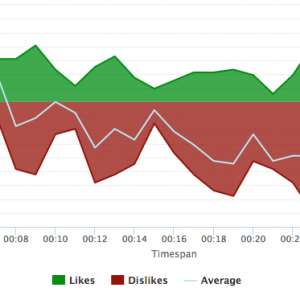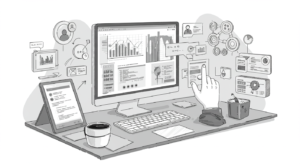5 Ways Slow Marketing Insights Hurt Campaign ROI (and how to fix it!)

Introduction
In the fast-paced world of enterprise marketing, speed is everything. Campaigns must be agile, responsive, and data-driven to keep up with shifting consumer preferences, emerging trends, and competitive pressures. However, many enterprises still rely on slow, outdated insights that take weeks to process—by the time the data is analyzed, the opportunity to optimize has passed.
Delayed marketing insights don’t just waste time; they drain budgets, reduce engagement, and diminish overall campaign ROI. In this article, we’ll explore five critical ways slow insights are hurting your marketing performance—and how enterprises can shift to a faster, more agile approach to decision-making.
The High Cost of Slow Insights
Every marketing campaign represents a significant financial investment – usually in dollars, but always in time spent. Many brands allocate millions of dollars toward media placements, creative production, and audience targeting—but without timely insights, they risk spending blindly.
According to a recent Forrester study, companies that react quickly to data-driven insights are 1.5x more likely to exceed revenue goals than those that rely on slow, traditional methods. The ability to analyze and act on real-time data can mean the difference between a highly successful campaign and an expensive failure.
Let’s break down five specific ways slow marketing insights are costing your brand.
1. Missed Opportunities for Optimization
Every marketing campaign has a window of opportunity to capture audience attention and drive engagement. However, when brands wait too long to analyze performance data, they miss the chance to make critical adjustments that could have improved results.
Scenario: A large consumer electronics brand launches a multimillion-dollar digital ad campaign. A few weeks later, their insights team discovers that engagement rates on Facebook are 40% lower than expected, while their YouTube ads are overperforming. However, because they lacked real-time insights, they kept spending inefficiently instead of shifting budget to the higher-performing channel.
How to Fix It:
- Implement real-time tracking dashboards that provide instant campaign feedback.
- Use automated alerts to detect underperforming ads early and make fast adjustments.
- Conduct A/B testing dynamically to improve messaging and creative elements.
2. Wasted Media Spend
Without timely insights, enterprises risk wasting millions on ads that aren’t driving conversions. Slow insights lead to inefficient budget allocation, where brands continue investing in low-performing channels, creatives, or audiences.
Scenario: A well-known CPG (Consumer Packaged Goods) company once ran a global product launch campaign. It took six weeks to analyze early results—by the time the insights came in, they had already spent 80% of the budget on media placements that weren’t resonating with key demographics. Had they identified these inefficiencies earlier, they could have reallocated spend to maximize impact.
How to Fix It:
- Before your campaign: start with a test using ad testing platforms to validate creative effectiveness before scaling a campaign.
- During your campaign: Monitor key performance metrics (CTR, conversion rates, engagement) daily.
- After your launch: Shift budgets dynamically based on data-driven recommendations, rather than waiting for post-campaign reports.
3. Delayed Responses to Market Trends
Consumer preferences and market conditions change rapidly. A slow response to shifting trends can leave a brand looking outdated or irrelevant.
Scenario: A fast-food chain is launching a new product just as a viral food trend (say…a spicy chicken sandwich??) takes over social media. If their marketing team is relying on quarterly consumer research, they won’t react in time to align their messaging with the latest trend. Meanwhile, a competitor that leverages real-time insights can quickly adjust its campaign to capitalize on the moment—stealing market share in the process.
How to Fix It:
- Use social listening tools to track trending topics and adjust campaigns accordingly.
- Invest in AI-driven analytics to predict shifts in consumer behavior before they happen.
- Adopt a real-time insights platform to stay ahead of competitors.
4. Poor Audience Targeting & Engagement
Slow insights make it difficult to refine audience targeting in real time, leading to wasted impressions and disengaged consumers.
Many enterprises build audience personas based on historical data rather than real-time consumer behavior. As a result, they often target the wrong demographics, use outdated messaging, or fail to recognize shifts in sentiment.
Scenario: A major telecom provider learned this the hard way when they launched a national ad campaign targeting Gen Z customers. Their initial research suggested that humor-driven ads performed best with this demographic. However, real-time social engagement data showed that authentic, emotional storytelling resonated more. Because they relied on delayed insights, they failed to optimize the campaign while it was live, leading to underwhelming performance.
How to Fix It:
- Leverage AI-powered segmentation tools to refine targeting on an ongoing basis.
- Before your campaign: start with a test using ad testing platforms to validate creative effectiveness before scaling a campaign.
- Use dynamic ad personalization to tailor content to different customer segments instantly.
5. Reduced Competitive Advantage
Enterprises that rely on slow insights are at a competitive disadvantage compared to brands that operate with real-time intelligence. Marketing success is about speed and precision—brands that react faster than their competitors consistently win.
Scenario: Consider the difference between two major automobile brands launching new models at the same time. One brand uses monthly reports to assess campaign performance, while the other relies on live consumer feedback to adjust messaging, visuals, and targeting in real time. By the end of the campaign, the second brand outperforms the first in engagement and sales—simply because they acted on insights faster.
How to Fix It:
- Implement a centralized, real-time marketing insights hub.
- Prioritize data-driven decision-making over traditional reporting cycles.
- Foster a culture of agility, where marketing teams react instantly to new data.
How Enterprises Can Speed Up Insights for Better ROI
To avoid falling into the slow insights trap, enterprises should:
✅ Budget for the research. Test your messaging, packaging, storyboards, videos using tools designed for agile analysis
✅ Invest in real-time analytics tools to track campaign performance instantly.
✅ Automate data collection and reporting for faster decision-making.
✅ Use AI-driven insights to predict and act on trends before competitors.
✅ Shift from monthly or quarterly reporting cycles to a continuous insights approach.
Conclusion
Slow marketing insights don’t just waste time—they cost enterprises millions of dollars in missed opportunities, wasted spend, and lost competitive advantage. To stay ahead, brands must embrace real-time insights, adjust campaigns on the fly, and ensure that every marketing dollar is optimized for maximum ROI.
By transitioning to faster, smarter decision-making, enterprises can improve campaign performance, reduce media waste, and outpace competitors in today’s rapidly evolving market.
Is your brand ready to move beyond slow insights? Explore modern solutions in Ad Testing and Rapid Response research to optimize your campaigns and maximize ROI. You need real-time marketing intelligence—because in today’s digital landscape, speed wins.








